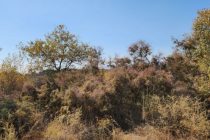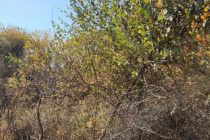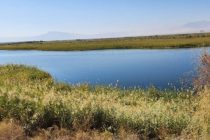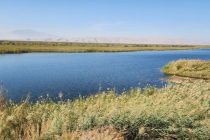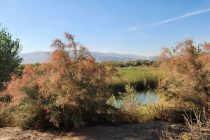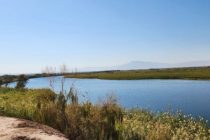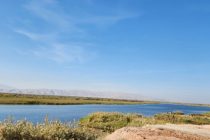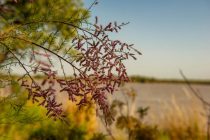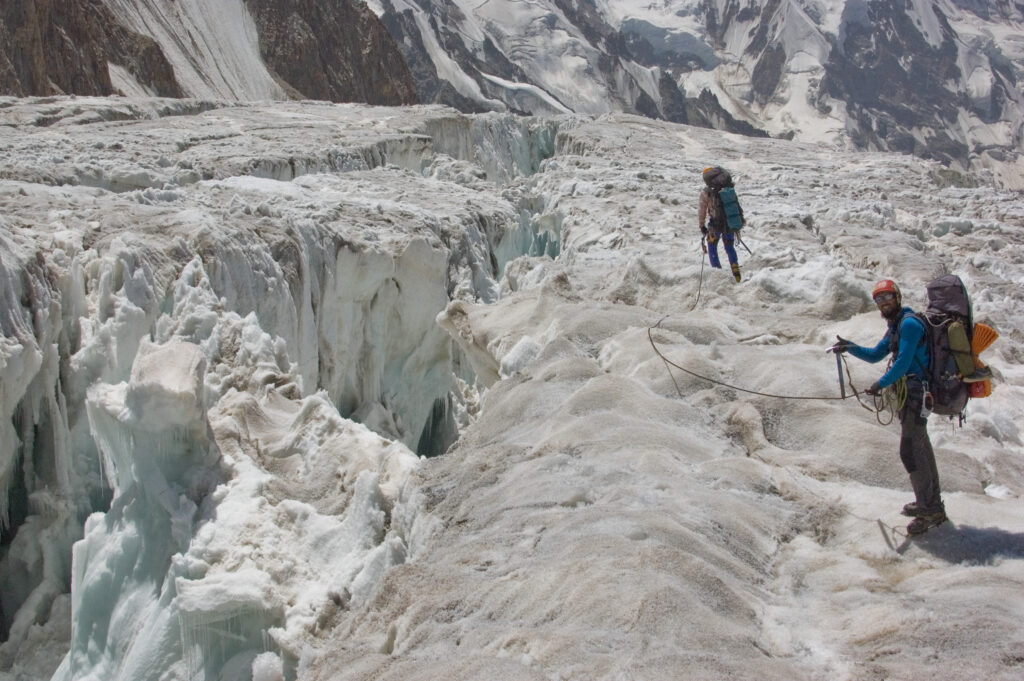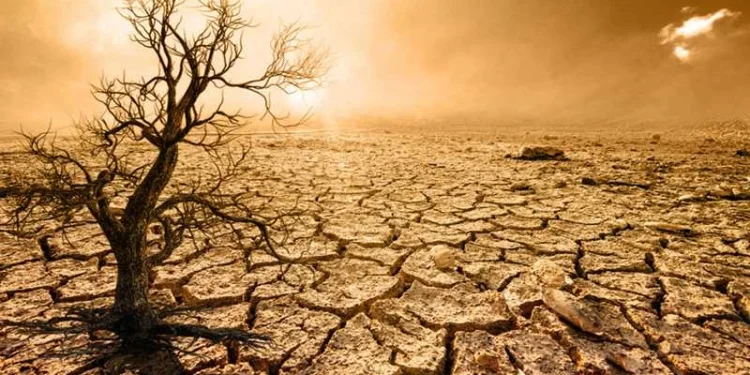The tugai forests of the Tigrovaya Balka Nature Reserve were inscribed on the UNESCO World Heritage List on September 20, 2023. The decision was made during the 45th extended session of the World Heritage Committee, which was held in Riyadh (Saudi Arabia).
On October 19, the Committee for Environmental Protection under the Government of the Republic of Tajikistan organized a study tour for 40 journalists, eco-volunteers and bloggers.
The purpose of the trip is to tell about the uniqueness of this area.
The trip took about three hours. Along the way you can see beautiful mountain landscapes, cotton fields, well-kept vineyards, rural jamoats, work in the field. The smooth roads, which have been put in order in recent decades, are impressive.
As it turned out, Tigrovaya Balka itself is not a tourist attraction; it is open exclusively to scientists and scientific research.
Despite the fact that the reserve is called “Tigrovaya Balka”, Turanian tigers were last seen there in 1954.
As the head of the department of biological monitoring, science and environmental education of the State Institution “Specially Protected Natural Areas” under the Committee for Environmental Protection Khursandmurod Fattokhov explained, the State Nature Reserve “Tigrovaya Balka” was created on November 4, 1938 in order to preserve the natural complex characteristic of the southern deserts and floodplains of the rivers of Central Asia, to protect rare animals and to conduct diverse scientific research.
“The reserve is located between the Vakhsh, Panj and Kafirnigan rivers, on the border with Afghanistan, at the place where the largest river in Central Asia, the Amu Darya, is formed. The protected area of 49,786 hectares covers a vast area of tugai ecosystems along the banks of the Vakhsh River, areas of the hilly sandy desert of Kashka-Kum, the Buritau Mountains, as well as the lowlands of the southern spurs of the Aruktau Range, and the Khodja-Kaziyon Mountains.
“Tigrovaya Balka” is the oldest desert-tugai reserve in the system of reserves of Tajikistan. Tugai forests occupy an area of 24.1 thousand hectares. This is the only place in the world where the pristine tugai formation has been preserved over significant areas. The territory of the reserve is not only a place of distribution of endangered rare, endemic and relict species of plants and animals, but also represents a natural and unmodified habitat for vulnerable representatives of the fauna. Among them: Bukhara deer, the population of which in the reserve exceeds 300 individuals, goitered gazelle, striped hyena (included in the IUCN Red Book), gray monitor lizard, Tajik black and gold pheasant and many waterfowl,” said the head of the department of biological monitoring, science and environmental education.
In fact, when you drive through this reserve, you realize that in reality this area does not correspond to the expectations of ordinary people. This is not a dense forest with tall trees and shade. This is a semi-desert with bushes and saline soil, crunchy underfoot and white in places, like snow.
It is clear that other plants will not be able to survive here in such conditions.
Moreover, planting other types of trees here is strictly prohibited by law, as this would disrupt the ecosystem of the reserve, which to some extent protects part of Tajikistan from the dust storms of Afghanistan.
The interlocutor noted that the object is an outstanding example of significant ecological and biological processes in the evolution of ecosystems and plant and animal communities.
The reserve is rich in various lakes, numbering more than 20 large and small reservoirs. They are home to 16 species of fish, including carp and small gambusia, which is a natural destroyer of malaria mosquito larvae.
“Tigrovaya Balka” is the only desert-tugai reserve in the world in the zone of dry subtropics of the Central Asian type for the preservation of the tugai plant complex and the animals living in it. In winter, many birds stop in the reservoirs of the reserve, including white and black storks, cormorants, geese, swans, mallards, coots. The main objectives of the reserve are to ensure the maximum preservation of territorially associated ecosystems, the integrity of their structure for the stable development of this unique wetland natural complex in combination with sandy-desert, low-mountain xerophytic vegetation in conditions of strong anthropogenic influence in the waters of the reserve and the project territory as a whole. It is necessary to develop mechanisms for organizing conditions for non-interference of humans in the natural processes occurring in the reserve, to minimize the factor of emergency situations, to minimize and gradually completely eliminate the transboundary entry into the reserve of all types of harmful substances that are not typical for the ecosystem,” said Khursandmurod Fattokhov.
As the ecologist reported, the reserve’s objectives also include ensuring optimal conditions to prevent poaching and maximally limiting disturbance factors for large animal species.
In the first 9 months of this year, only 10 permits for scientists to visit this place have been officially issued, and 63 acts have been drawn up against violators of the law.
“We are trying to organize conditions for conducting scientific research and educational work for the population of all ages and social composition. We organize all types of monitoring to study and predict the course of development of succession processes, including the dynamics of biological processes in wildlife. It is necessary to develop various scenarios for mitigating the impact of economic activity in the waters of the reserve and prevent invasive alien species from entering the ecosystems of the reserve,” summed up the head of the department of biological monitoring, science and environmental education of the State Institution “Specially Protected Natural Areas” under the Committee for Environmental Protection, Khursandmurod Fattokhov.
Lailo TOIRI
NIAT “Khovar”
PHOTO: NIAT “Khovar”


